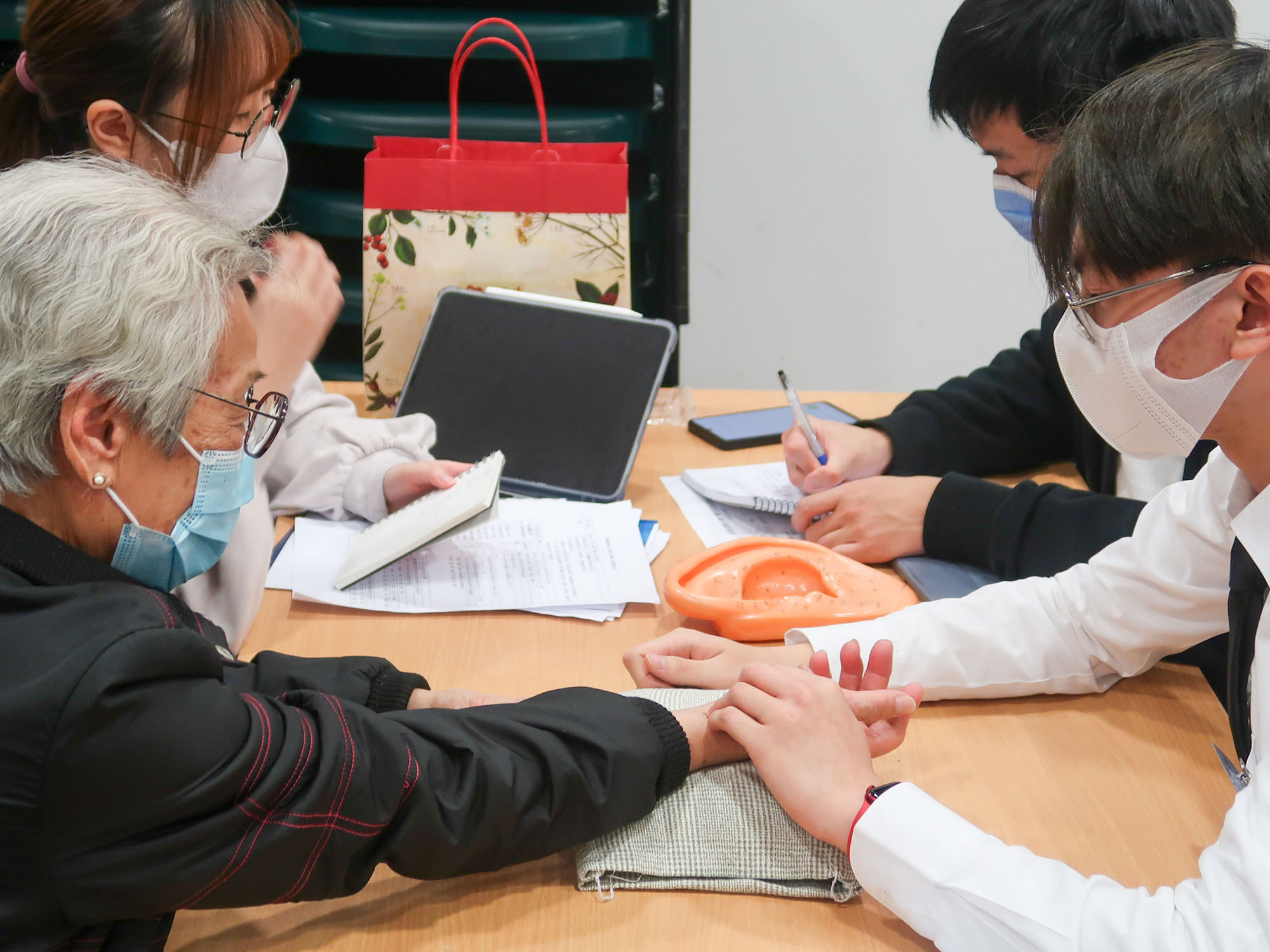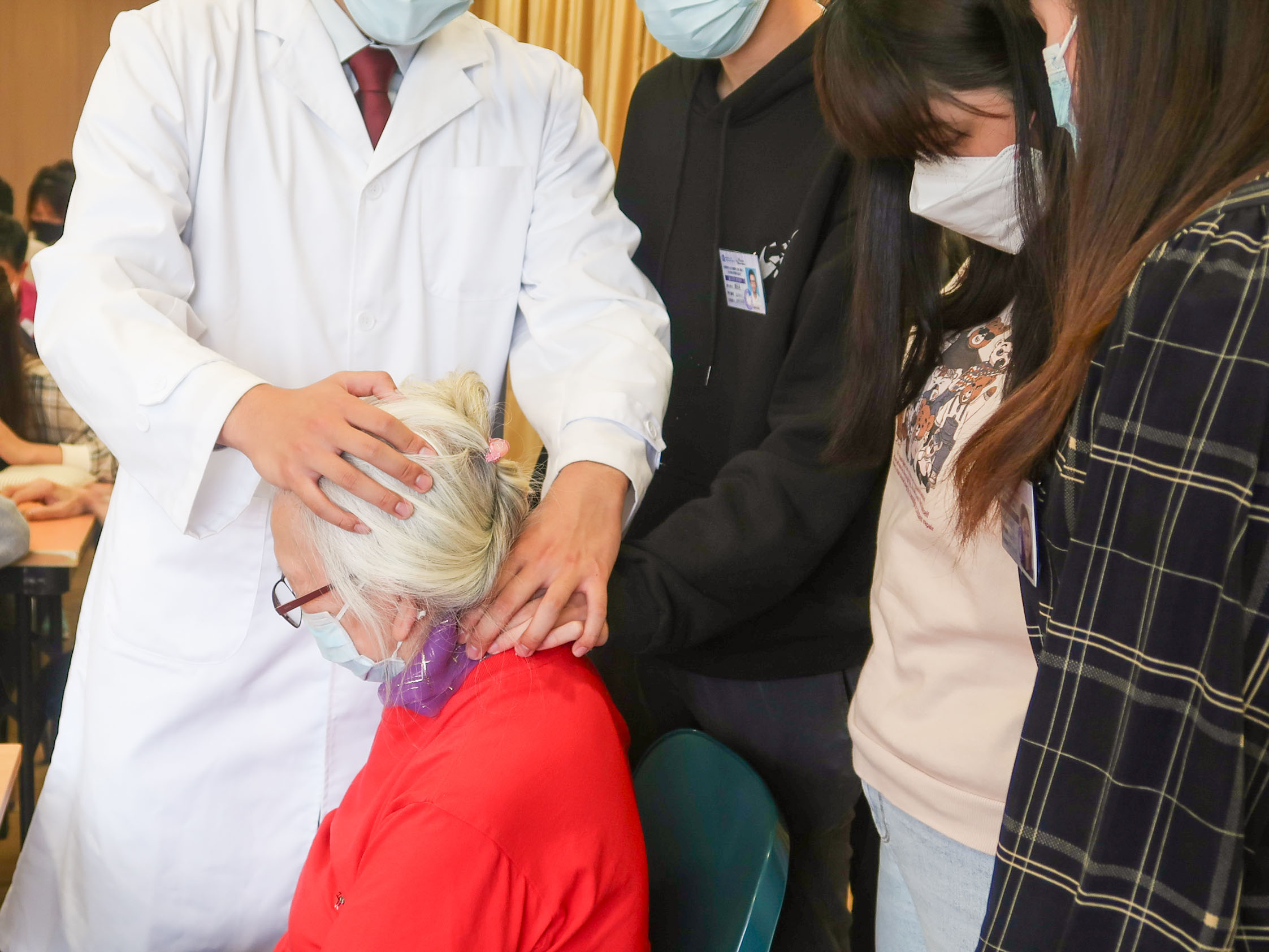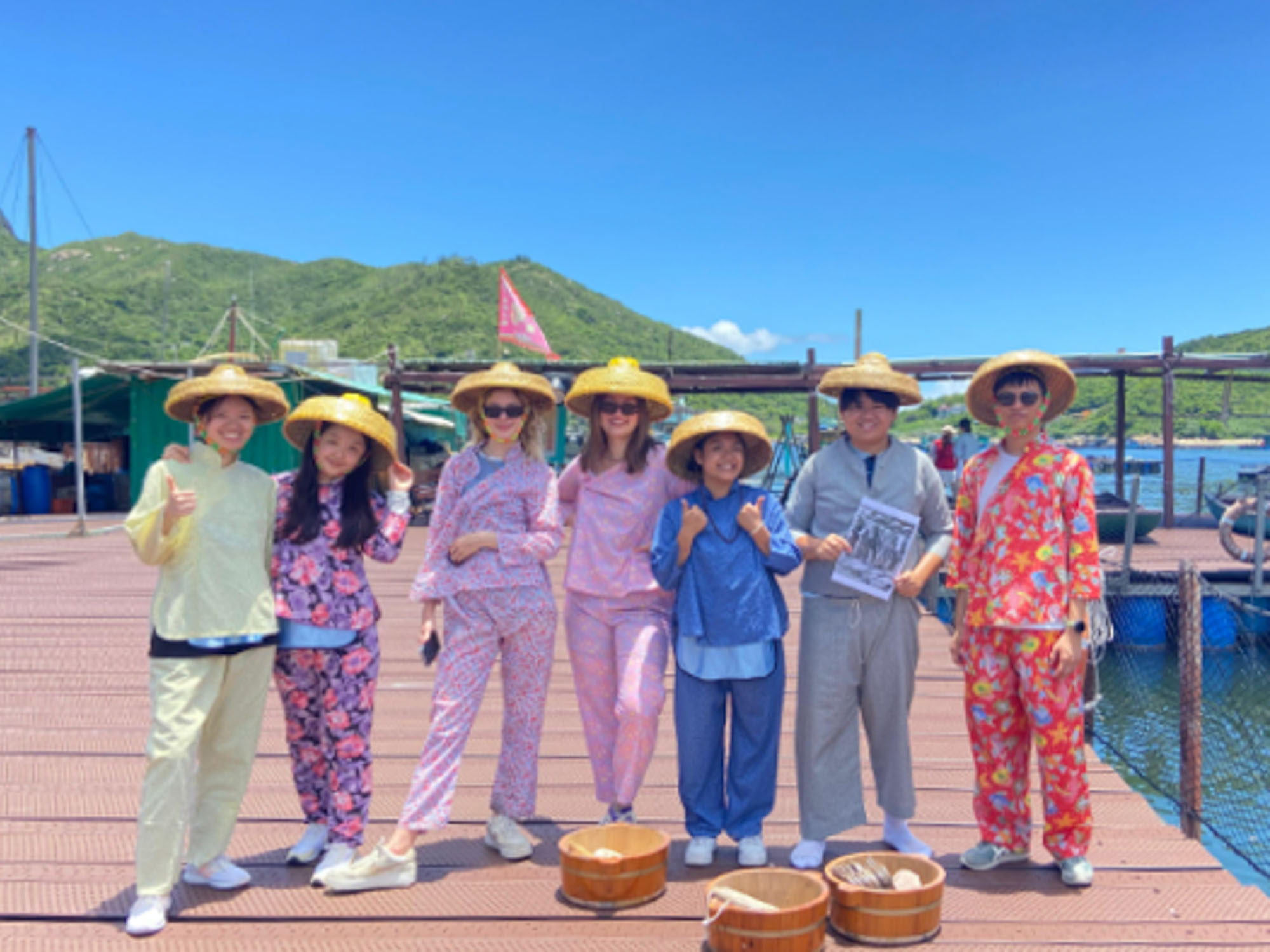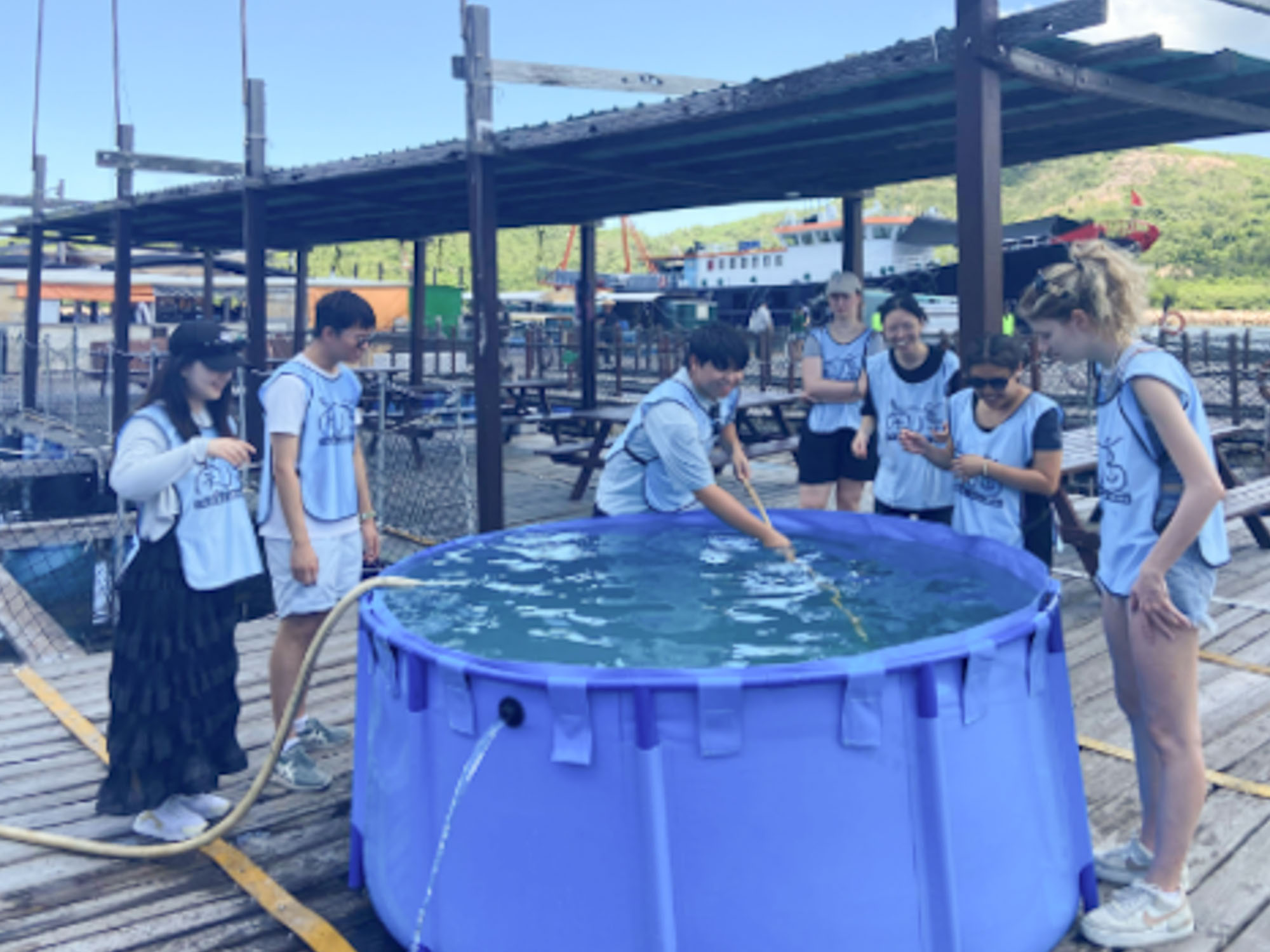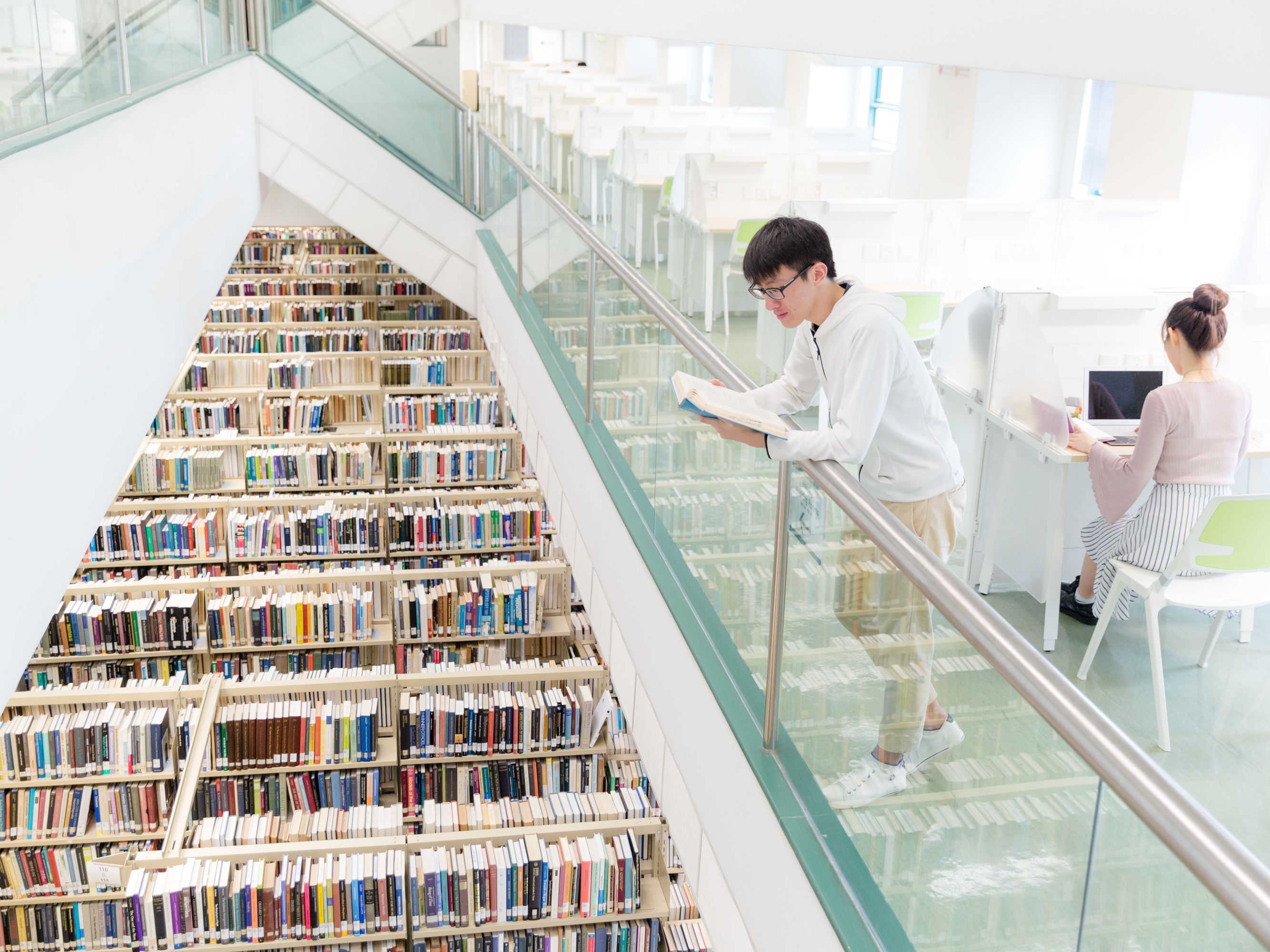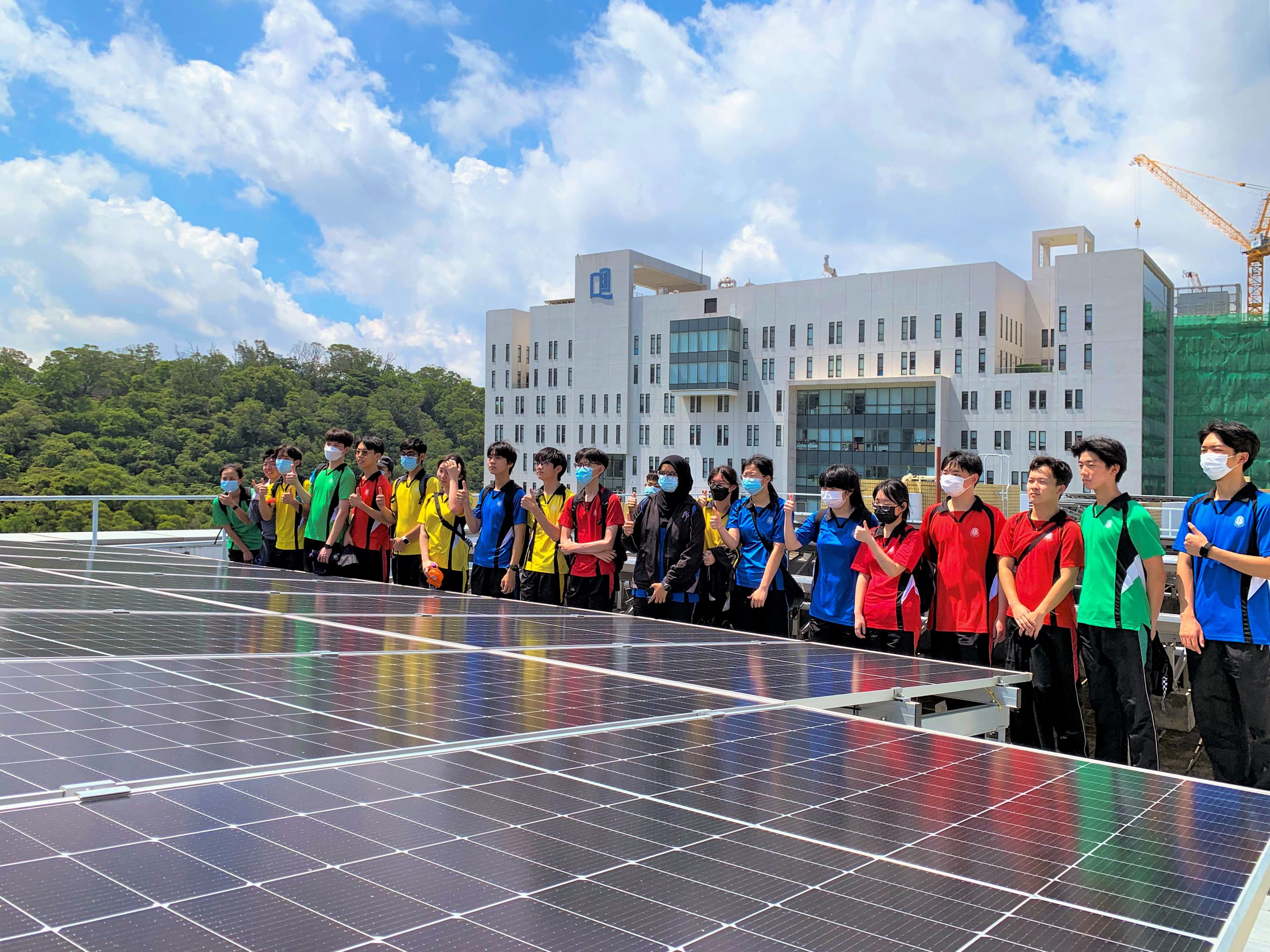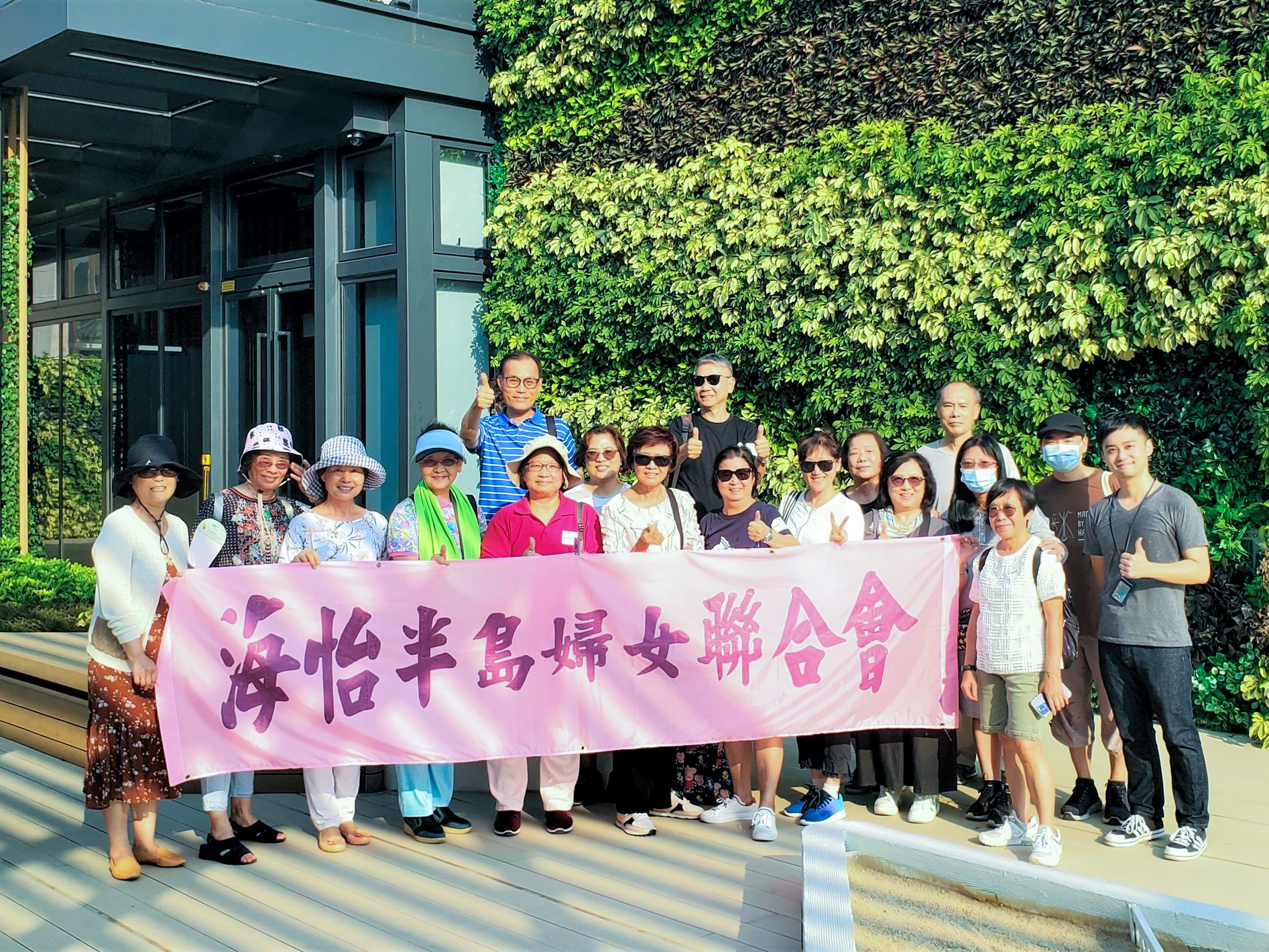SDG 11: Sustainable Cities and Communities
Promoting clean and renewable energy
Led by Dr Daphne Mah, Director of Asian Energy Studies Centre, the service-learning course “Sustainable Energy and Technological Innovation in China” provided students with the opportunity to learn about clean and renewable energy through engaging group projects and activities. Students were divided into teams and assigned various tasks, including conducting online research, creating an online map of solar energy resources, and organising solar workshops in primary schools to promote energy awareness. Throughout the course, students not only gained valuable knowledge about clean energy but also developed collaboration skills. They also explored the potential of public engagement as a means to help cities achieve their carbon-neutral goals.
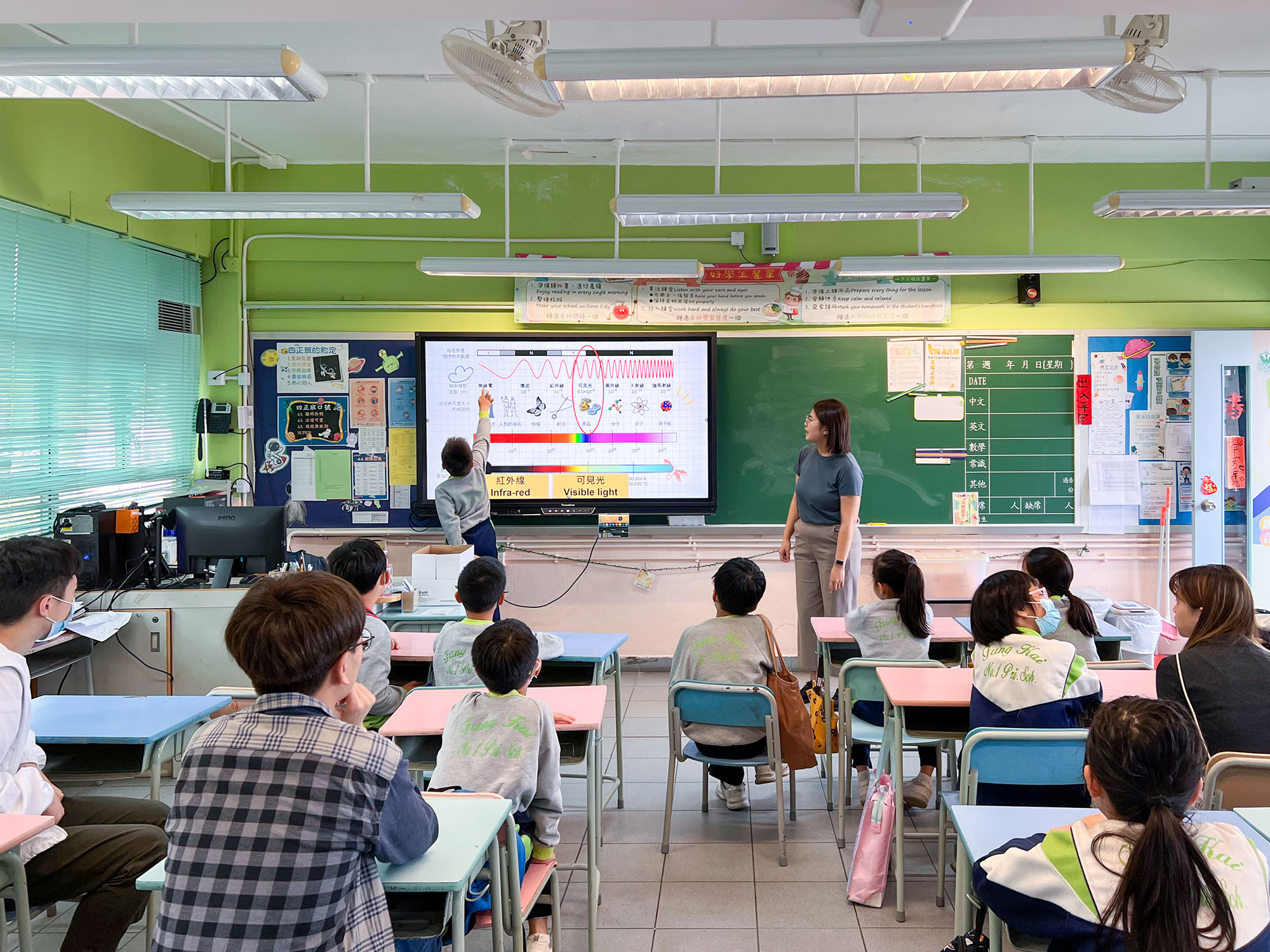

Providing compassionate care
In the service-learning course “Diagnostics of Chinese Medicine” led by Dr Li Hong and Dr Lam Chun-pong of the School of Chinese Medicine, students conducted consultations with over 40 senior citizens, utilising acupressure and ear acupoint pressing techniques to address their patients’ ailments. To enhance the experience, students also organised visits to the Chinese Medicine Museum at HKBU. In the course, students not only acquired practical skills in acupressure, precise record-keeping and doctor-patient dialogues, they also developed a deep sense of empathy through their interactions with the elderly. This experience allowed them to recognise the significance of companionship, particularly in the care of older individuals.
Preserving Hong Kong’s fishery industry heritage
To safeguard and promote the cultural heritage of Hong Kong’s fisherfolk and the fishery industry, the International Office organised a one-day field trip known as “Lamma Fisherfolk Village - A Day in the Life of a Fisherman”. This unique programme allowed students from 14 countries to explore various aspects of the fishery industry’s heritage, including fishing junks, floating houses, and the handicraft skills associated with marine products. Immersed in interactive fishing games, the students learnt firsthand about the importance of preserving the traditional fishery culture of Hong Kong. They also experienced the thrill of the dragon boat race, indulged in freshly made fish fillet buns, and participated in the creation of a delicious Hakka Cha-Guo. This immersive journey not only provided students with a memorable and enjoyable experience but also deepened their appreciation for the vibrant history and culture of Hong Kong’s fishery industry.
Promoting environmental awareness and marine conservation
To advocate environmental protection, the International Office and the World Wildlife Fund co-hosted a virtual event “Hong Kong Safari” for incoming exchange and local students. This engaging event aimed to introduce students to the ecological hotspots in Hong Kong while raising awareness about sustainability goals, wildlife, and biodiversity. The students also gained a deeper understanding of the environmental landscape of Hong Kong, including its iconic pink dolphins. By showcasing the importance of appreciating valuable marine resources, the event also highlighted the work of the Hoi Ha Marine Life Centre, encouraging students to understand the significance of marine conservation efforts.




Modes of expression and representation in calligraphy tapestry
Academy of Visual Arts
Author: LAU Chak Kwong
Dr Lau has created a large-scale Chinese calligraphy tapestry aimed to inspire people to appreciate and enjoy life in the city. The artwork, displayed in the lobby of a commercial building in Hong Kong’s busy San Po Kong district, measures 427cm x 561cm. It features two intriguing Chinese characters, “shan” (mountain) and “lu” (deer), depicted in oracle-bone script. These characters are inspired by verses from the Bible, specifically Psalm 121:1-2 and Psalm 42:1, which reference to mountains and deer. The lively and graceful brushstrokes of the calligraphy tapestry vividly portray a serene nature scene, inviting viewers to escape the hustle and bustle of city life.


In conjunction with this artwork, Dr Lau presented a paper titled “Modes of Expression and Representation in Chinese Calligraphy: Calligraphic Works as Aesthetic-object-cum-public-message and their Dynamics with Contexts of Use in the City of Hong Kong” at the 18th International Conference on Interdisciplinary Social Sciences. The paper examines how this calligraphy tapestry signifies the transformation of Chinese calligraphy, from a traditional art form with a limited audience to a more accessible visual culture that reaches wider audiences in alternative public spaces within the city centre.
Deblurring traffic images in intelligent transportation systems
Department of Computer Science
Author: DAI Hongning
The recent advances of surveillance cameras, artificial intelligence technologies, and 5G communications have led to the implementation of intelligent transportation systems (ITS) in urban areas. These systems utilise computer vision and deep learning algorithms to analyse images and videos captured by ITS cameras, extracting key traffic characteristics such as traffic jams to facilitate intelligent decision making. However, the quality of these camera images is often compromised by blurring caused by moving vehicles, camera shake, or adverse weather conditions such as fog, rain, or snow.
Addressing this challenge, Dr Dai led a research study to develop a variant-depth neural network that effectively removes blurs from traffic images at low computational cost. Through a coarse-to-fine approach, the proposed method achieves state-of-the-art performance in deblurring, as demonstrated through extensive experiments conducted on traffic images. This project holds great potential in advancing the adoption of ITS and, consequently, in the development of sustainable cities.
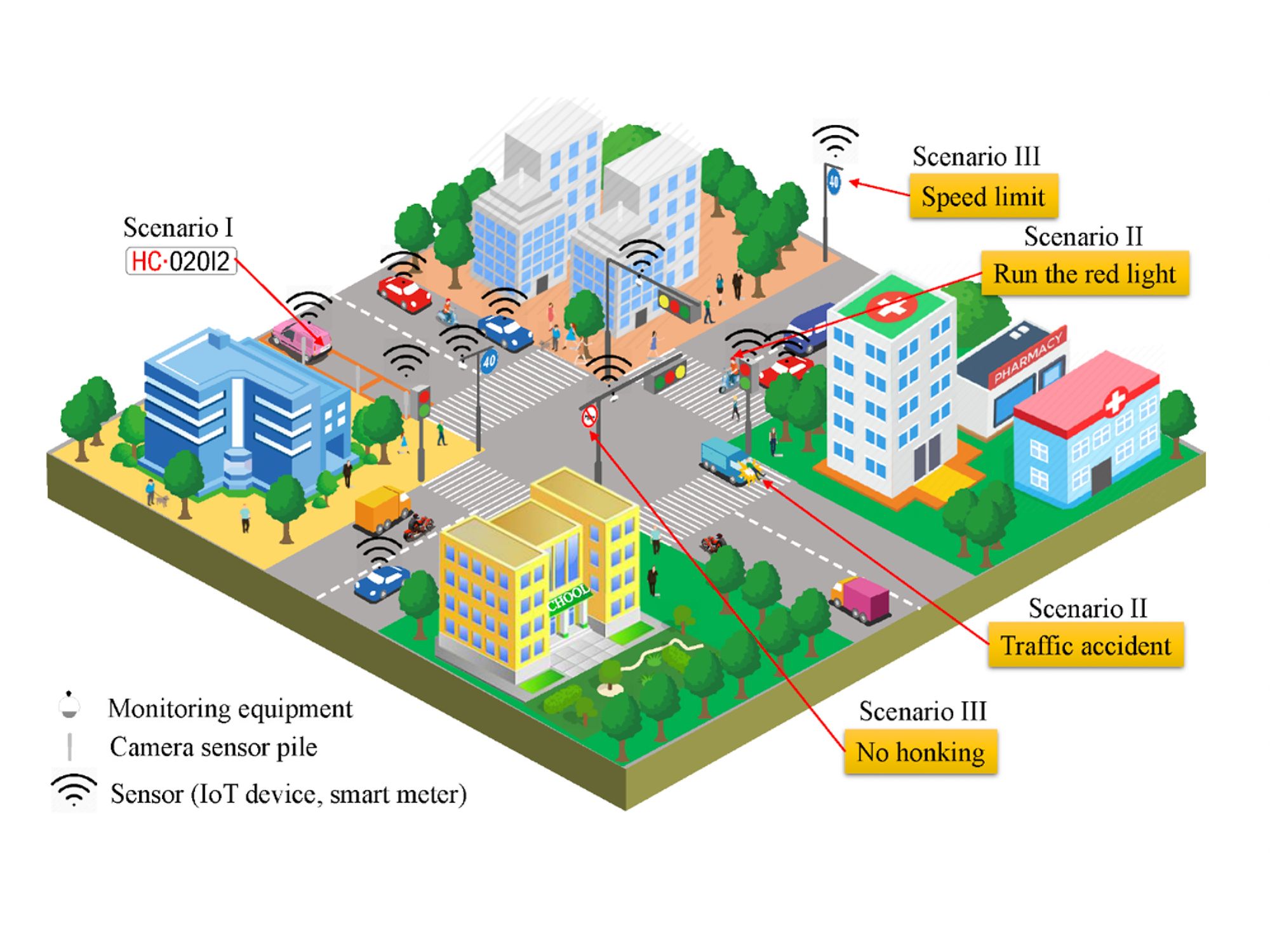

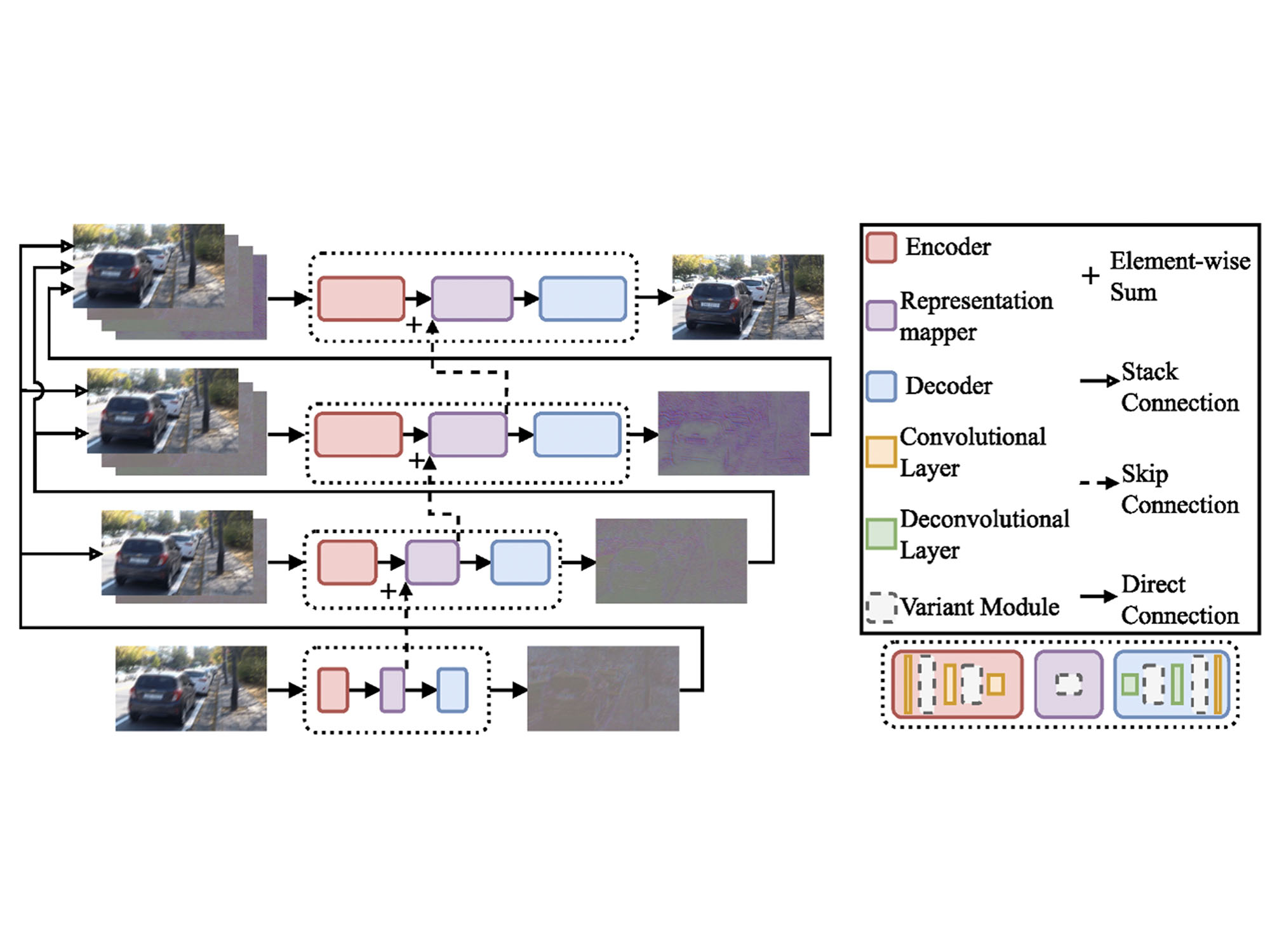

Building an age-friendly city
Department of Social Work
Author: GUO Yingqi
Dr Guo took part in a research project that studied how forms and characteristics of Asian public housing neighbourhoods affect dementia risk among the senior population in Hong Kong. The project aimed to assess the age-friendliness of each district and build momentum in developing an age-friendly community, recommend a framework to undertake continual improvement for the well-being of senior citizens, as well as arouse public awareness and encourage community participation in building an age-friendly city. The research findings showed that dementia among seniors in hilly public housing estates was negatively associated with the neighbourhood’s walkability and accessibility and was influenced by walking paths. It was suggested that improved forms and characteristics of public housing neighbourhoods should include more accessible spaces and community facilities along walking paths for physical activities and basic daily needs.
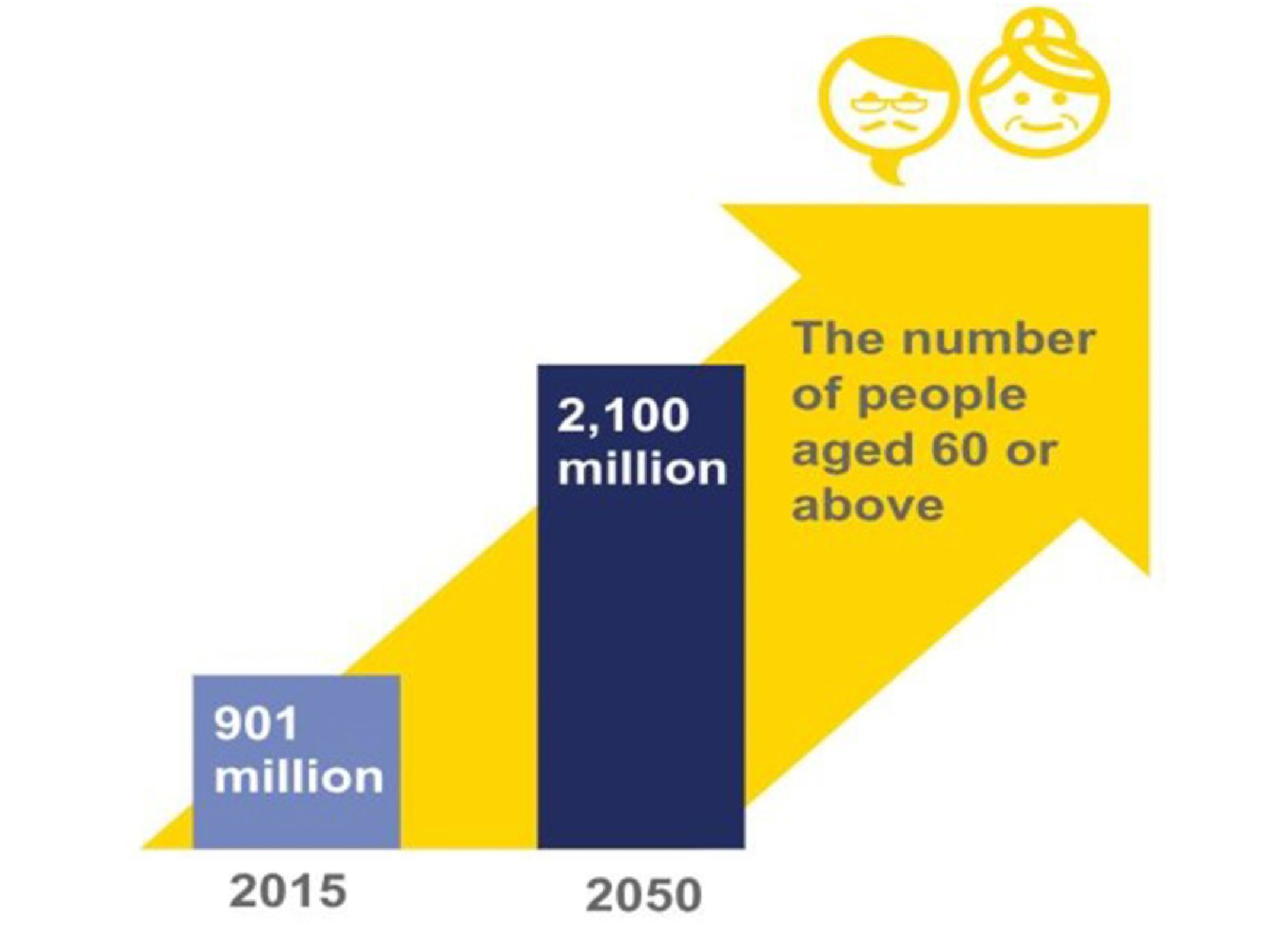

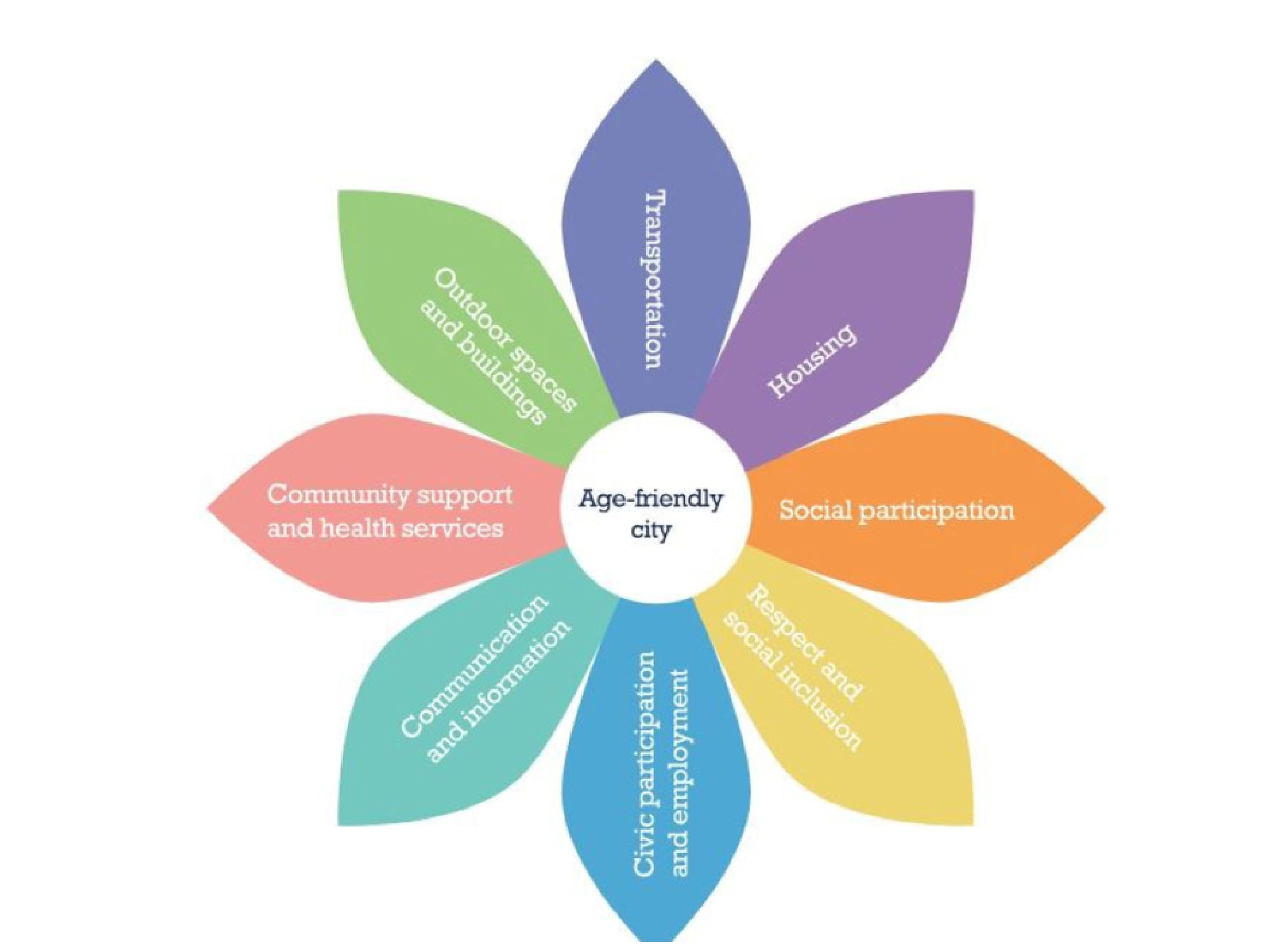

Public access to campus space and facilities
The University campus is accessible by the general public, who could have the opportunity to use designated indoor and outdoor areas on campus, including the library, cultural heritage sites and green spaces.
Fostering cultural exchange and community engagement
With the vision of being “a leading liberal arts University in Asia for the world delivering academic excellence in a caring, creative and global culture”, the University offers performance and event spaces that function as cultural hubs for both the University and its community. These venues foster harmonious exchange of ideas, culture and collaboration, and strengthen the bond between the University and the community.


- Academic Community Hall
The auditorium, with a seating capacity of 1,346 across two floors, is a versatile space suitable for concerts, musicals, variety shows, ceremonies, religious functions, and seminars. For decades, it has also been the esteemed competition venue for the Hong Kong Schools Music and Speech Festival.
- Tsang Chan Sik Yue Auditorium
With a seating capacity of 400, the auditorium is fully equipped with stage lighting and an audio-visual system as well as a VIP lounge. It serves as a multipurpose venue suitable for conferences, ceremonies, seminars, and a range of performances. In addition, the venue is barrier-free, ensuring accessibility for all.
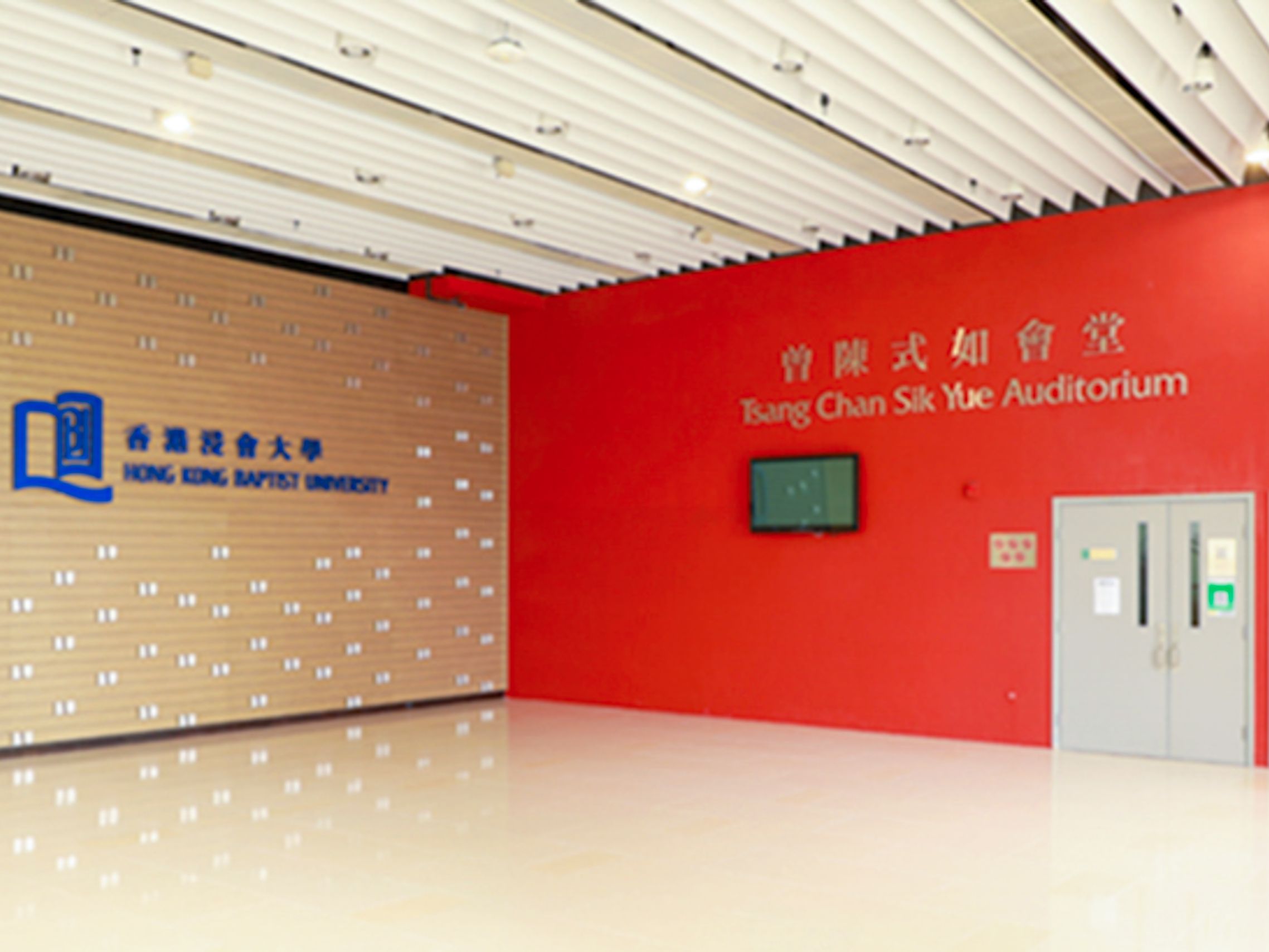

Preserving cultural heritage and nurturing creative talents
To creatively preserve and repurpose historic buildings, the University transforms historical premises into distinctive cultural landmarks. By doing so, it meets the demand from the arts community for affordable arts studios ad exhibition spaces, fosters the growth of young creative talents in Hong Kong, and offers the public a relaxed environment to engage with arts and culture. Additionally, guided tours are available for these spaces, providing visitors with a deeper understanding of the historical significance and artistic value of these repurposed buildings.
- Lui Seng Chun
The Lui Seng Chun building was chosen under Batch I of the “Revitalising Historic Buildings Through Partnership Scheme” initiated by the Government in 2008 and was declared as monument under the Antiquities and Monuments Ordinance in 2022. Following a competitive bidding process, the University was granted the opportunity to preserve and transform the building into a Chinese medicine healthcare centre. This project aims to breathe new life into the historic structure while providing valuable healthcare services to the community.
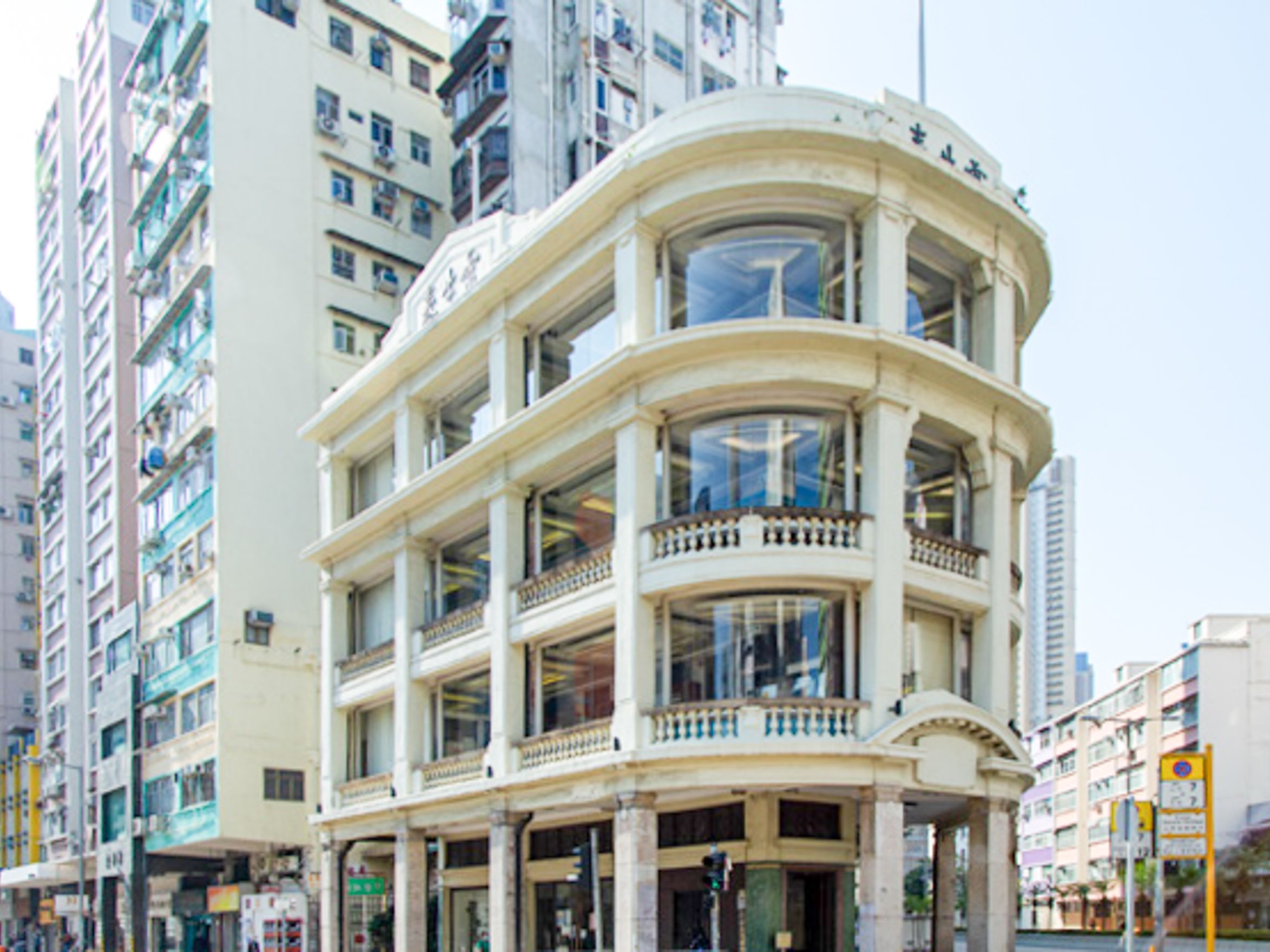

- Jockey Club Creative Arts Centre
Established in 2008, the Jockey Club Creative Arts Centre (JCCAC) holds the distinction of being Hong Kong’s premier artist village and arts centre converted from a former factory. As a self-financed registered charity and subsidiary of the University, JCCAC serves as a multidisciplinary arts and cultural venue open to the public. Its primary objective is to cater to the diverse needs of the arts community.


- Kai Tak Campus
The Kai Tak Campus, formerly known as the Royal Air Force Officers’ Mess, is a remarkable Grade I historic building showcasing a unique architectural style from the early 20th century. It serves as a venue for exhibitions, which are open to the public free of charge, providing an opportunity for visitors to immerse themselves in the cultural experiences offered by the University.
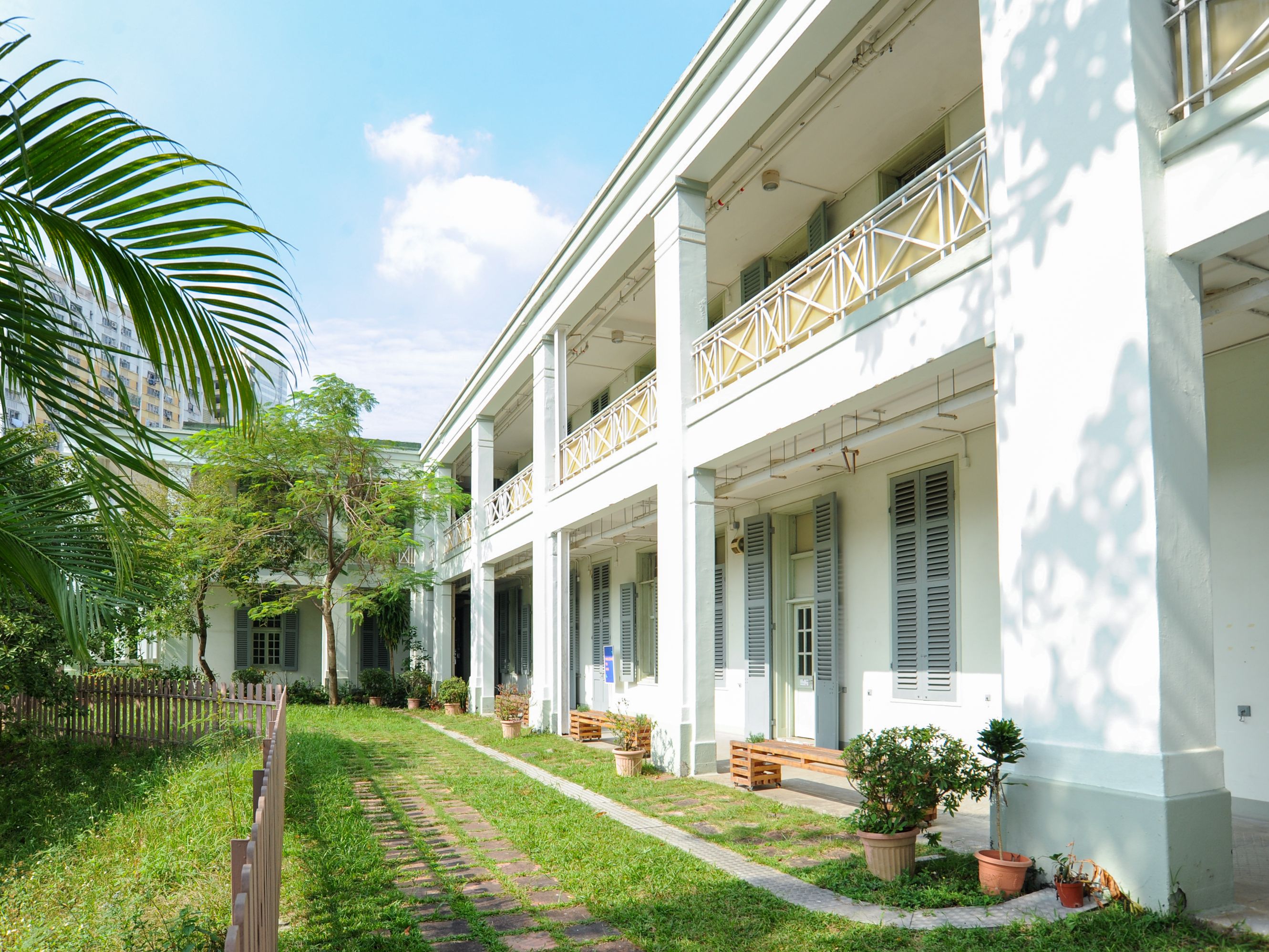

The first of its kind in Hong Kong, the Academy of Visual Arts (AVA) was founded in 2005. Nestled within the Kai Tak Campus, AVA houses the Centre for Research and Development in Visual Arts, along with a range of studios and an exhibition space, providing an immersive environment for teaching, learning, and showcasing the vibrant world of visual arts.
Sustainable campus development and green policies
Over the years, the University has consistently expanded and renovated its facilities. The construction of campuses and buildings follows a set of principles and requirements, with a focus on incorporating technologies to enhance sustainability. To showcase the University’s dedication to improving sustainability and promoting responsible practices on campus, a University Green Policy for Capital Projects and Major Addition and Alteration Projects for University Campus has been implemented for capital projects and major renovations. This policy ensures that every new construction or major renovation on campus is designed and constructed in an environmentally-friendly manner, adhering to recognised green building standards like the BEAM Plus certification scheme. Additionally, the University strives to avoid constructing on greenfield sites whenever possible.
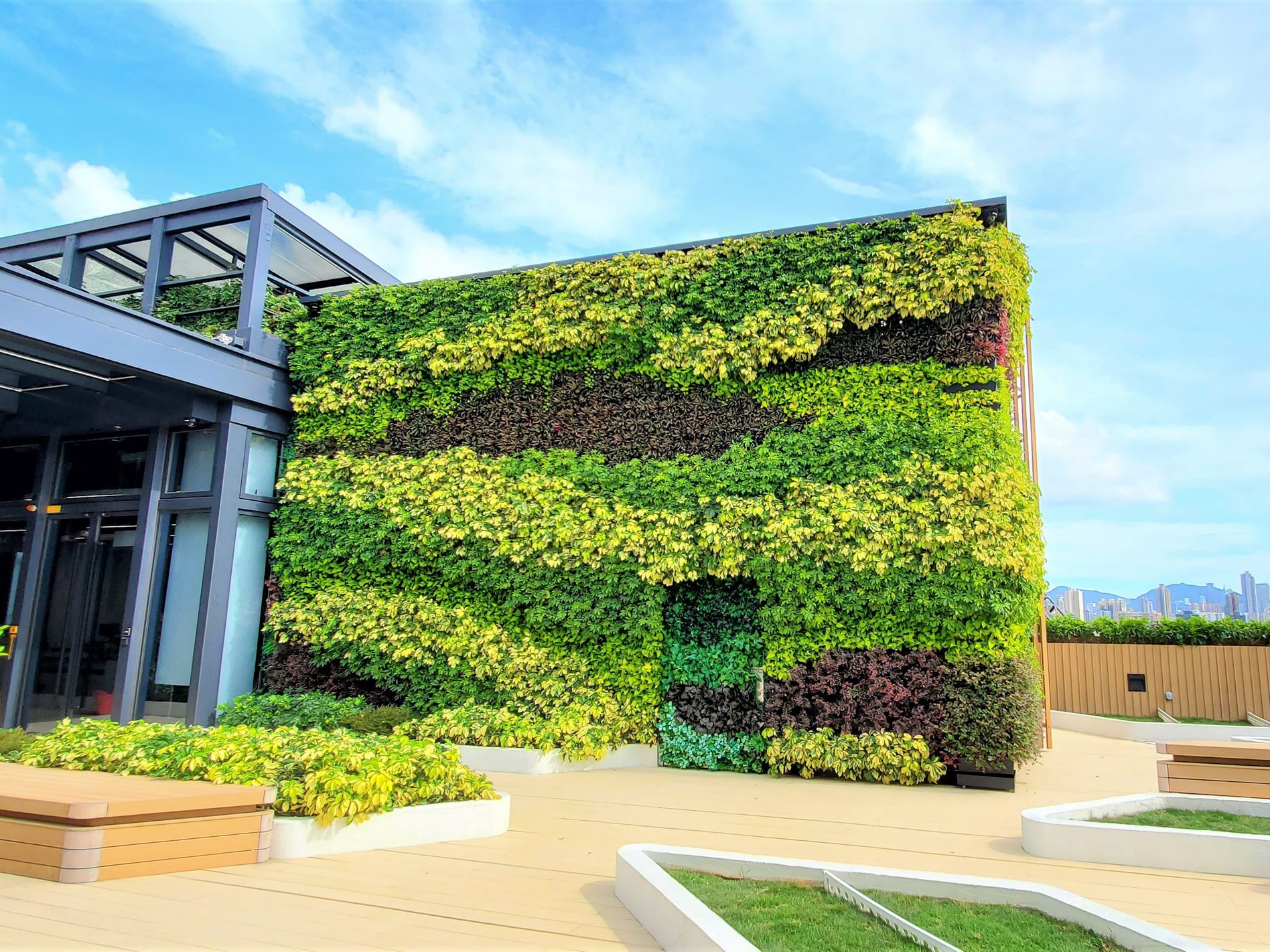

- CLP Smart Energy Award 2023
The Smart Energy Award, organised by CLP Power Hong Kong Limited, is an annual event aimed to acknowledge organisations for their exceptional efforts in energy conservation and carbon reduction. In 2023, the University was honoured with the prestigious Grand Award in the Energy Management category (Catering and Small and Medium Enterprises (SMEs), Non-governmental Organisations (NGOs), and Educational Institutes) following a comprehensive assessment of five key aspects, namely Green Leadership, Energy Saving and Performance, Technology, Creativity, Stakeholder Engagement. This recognition highlights the University’s achievements in sustainable energy practices and underscores its commitment to environmental stewardship.
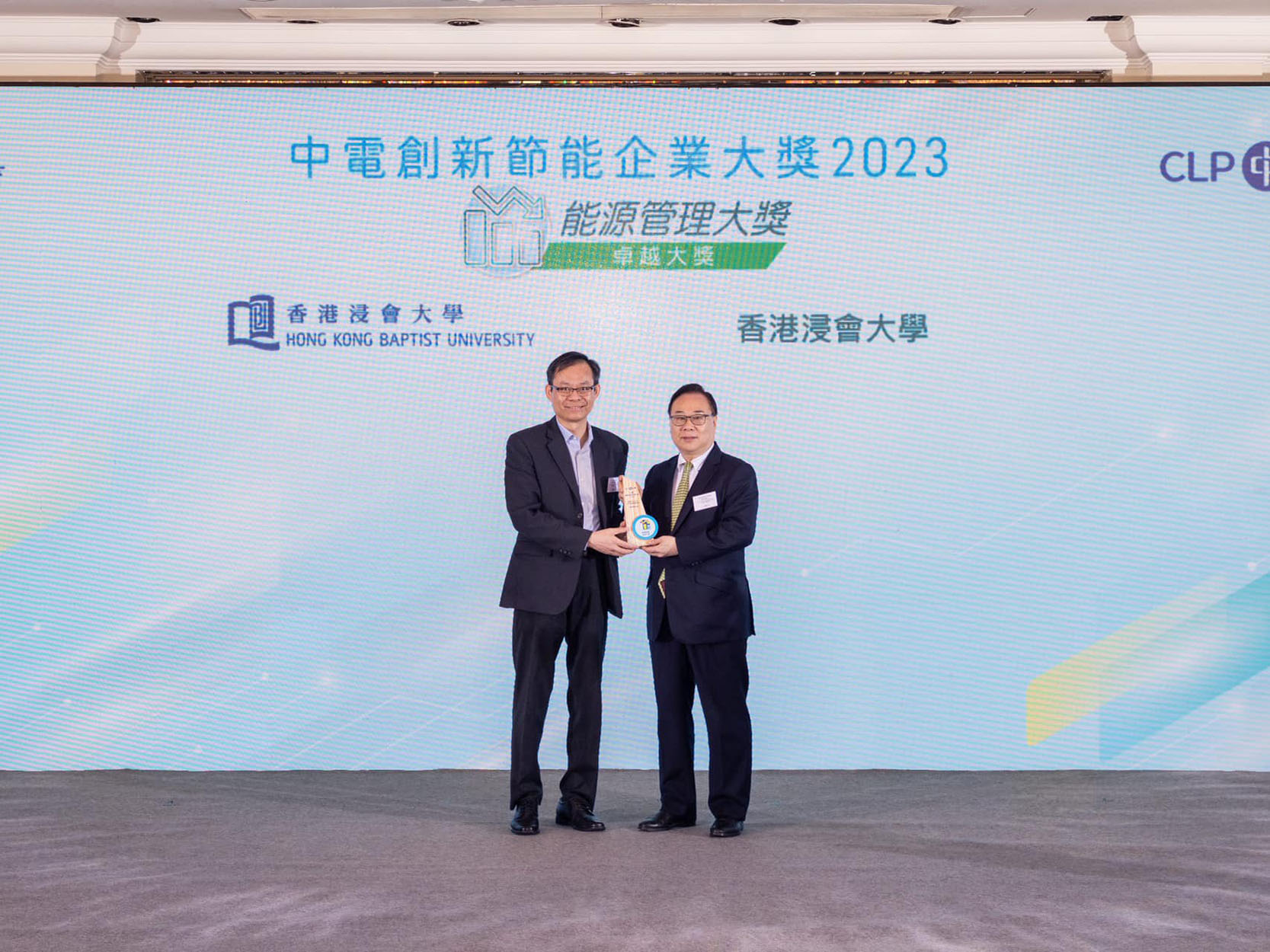

- Green Building Award 2023
The Crop Science Laboratory is one of the latest examples of sustainable architecture on campus, which is purposefully designed with various green and sustainable features. The building has been shortlisted as a finalist in the Green Building Award 2023, specifically in the Existing Buildings category for Completed Projects – Institutional. The University is honoured to be acknowledged alongside with other exceptional projects and takes pride in its contribution towards a greener and more sustainable future.
- Jockey Club Campus of Creativity
Currently under development, the award-winning Jockey Club Campus of Creativity has successfully registered for the BEAM Plus New Buildings Certification, highlighting its commitment to high sustainability standards.
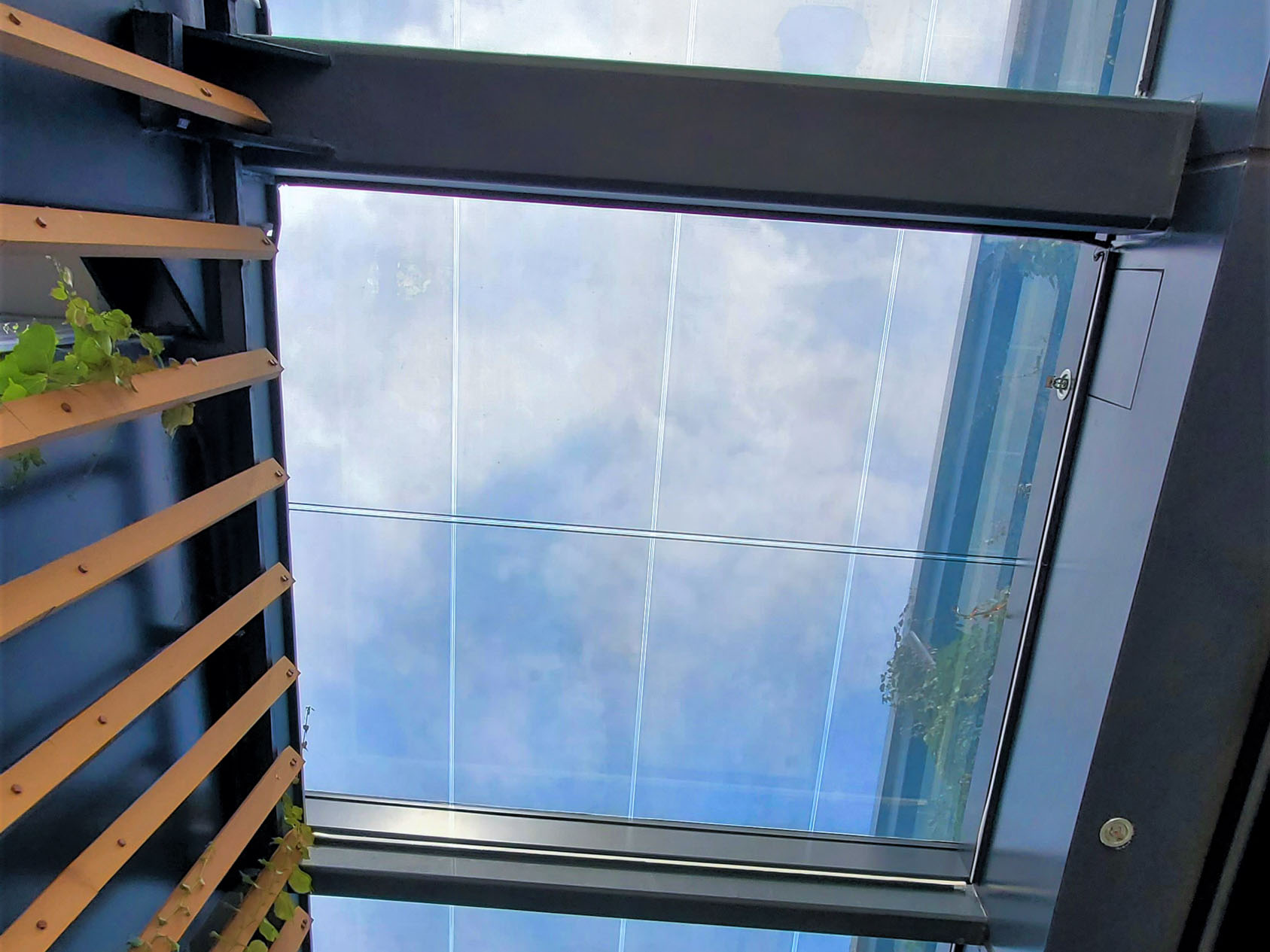

- Guided tours
Green buildings play a pivotal role in fostering sustainable cities and communities by effectively reducing energy consumption, enhancing air quality, and minimising waste. As part of our strategy towards carbon neutrality, the University always aspires to drive behavioural change. In line with this, guided tours for university students, secondary students, and visitors to showcase the solar photovoltaic panels and the Crop Science Laboratory are conducted. These tours serve as a platform to raise awareness about the significance of sustainable buildings and inspire individuals and communities to embrace similar practices.
Sustainable commuting
Echoing one of the four strategies defined in the carbon neutrality plan, the University has taken proactive measures to encourage sustainable commuting through the implementation of various initiatives.
- Electric vehicles (EV) charging facilities
The University is actively upgrading its EV charging infrastructure on campus. A significant expansion plan aimed to increase the availability of smart charging facilities for EVs is underway. The goal is to cover a substantial portion of the University’s private car parking spaces by 2026. As an initial milestone, the Jockey Club Campus of Creativity will see the installation of EV chargers in all parking spaces by 2024, with more enhancements to come in the future.
- Motorcycle and bicycle parking facilities
The University offers designated parking spaces for motorcycles and bicycles, making it convenient for individuals who opt for low-carbon commuting.
- Public transportation
Throughout the campus, prominently displayed signs guide individuals to the nearest Mass Transport Railway stations, promoting and encouraging eco-friendly commuting through public transportation. To facilitate convenient access to public transportation, the Kowloon Motor Bus Co. (1933) Ltd. has installed a KMB Fare Saver kiosk at the entrance of Shaw Tower on the Kowloon Tong campus. This initiative not only offers reduced fares but also serves as an incentive to induce more people to utilise public transportation.
Sustainable employment practices
The University values work-life balance and supports colleagues in meeting personal and family needs. Eligible staff members are provided with staff quarters for convenient and comfortable living. This creates an inclusive and supportive environment for a positive working experience and a stronger university community.
Since April 2023, the Human Resources Office has been enhancing the well-being of the staff members and their affiliates through an Employee Fitness Programme. This programme offers a diverse range of courses, each tailored to individual interests, abilities, and fitness objectives, ensuring everyone can meet their unique health goals. In addition, various mindfulness programmes aimed at helping staff members alleviate stress and enhance their mental health have been also organised.
The University regularly highlights the importance of well-being through internal communications to staff. These messages offer useful facts and insights, while also reminding everyone of the value of self-care and overall wellness.
